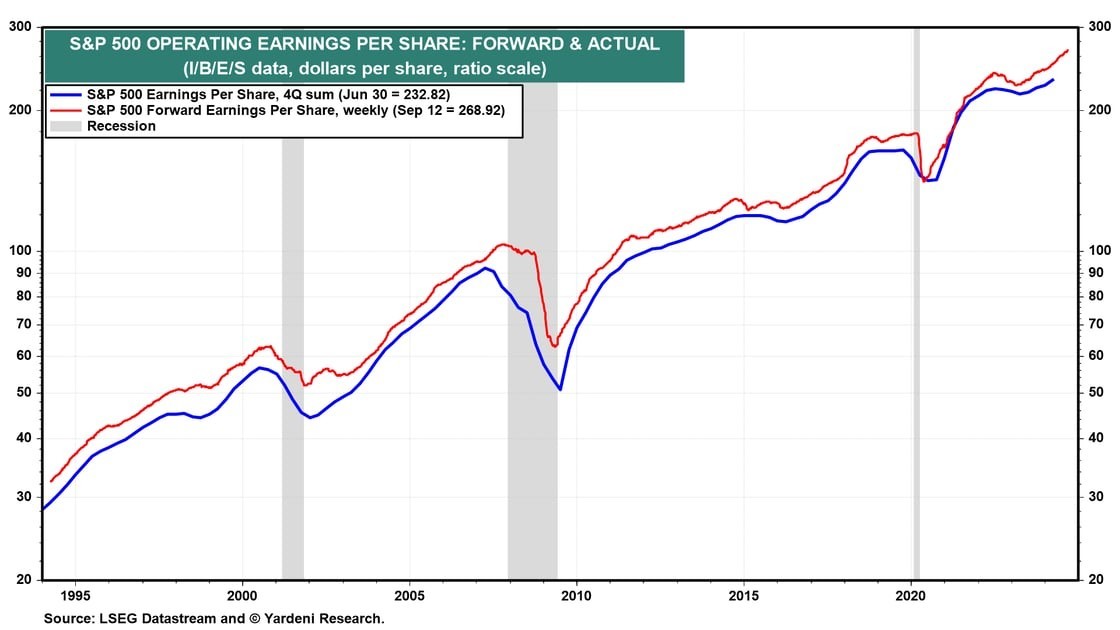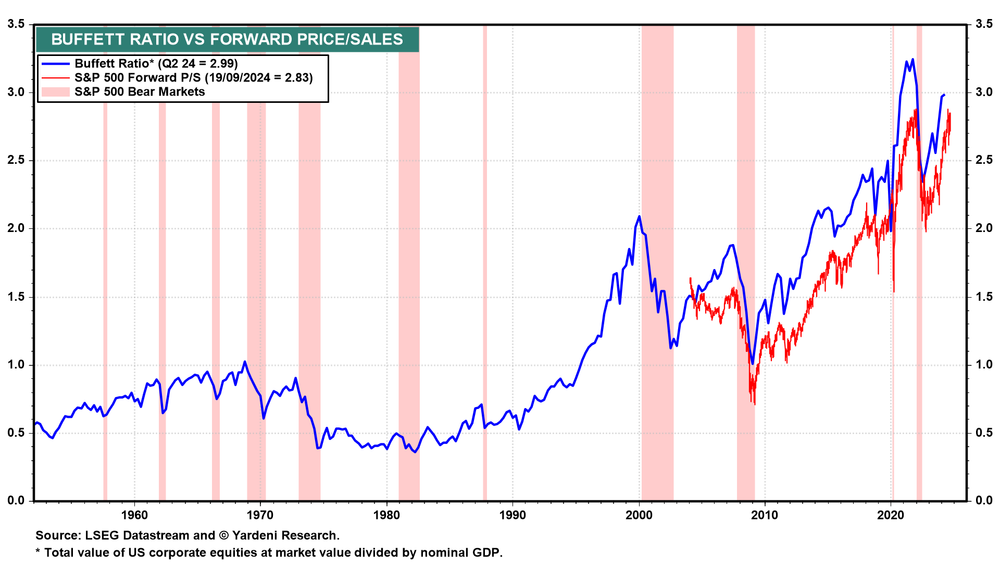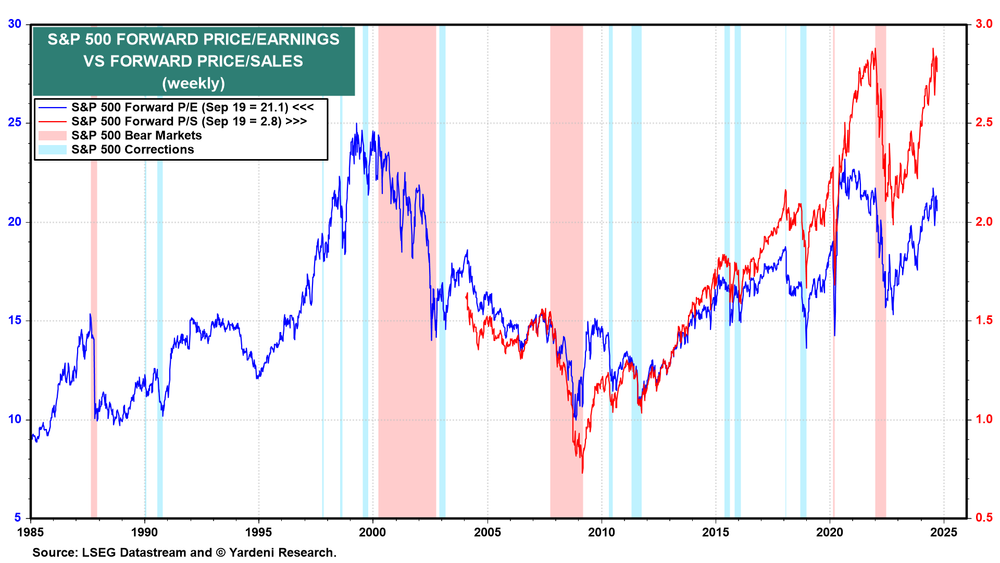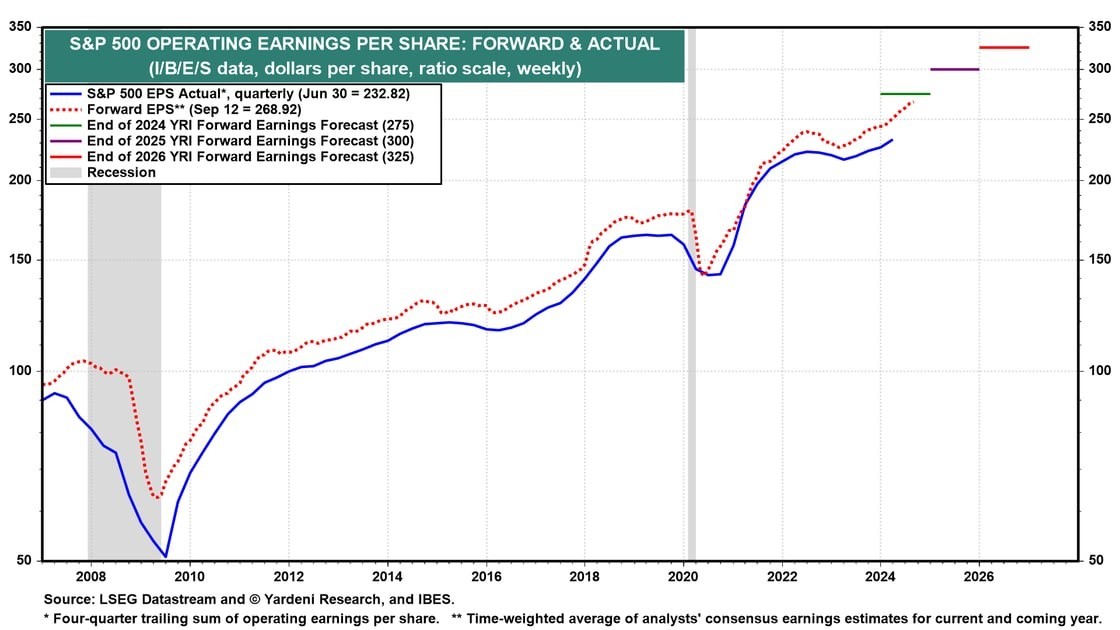We've focused on three scenarios since the start of the decade: a 1920s-style Roaring 2020s, a reprise of the 1990s stock market meltup, and a rerun of That '70s Show with geopolitical shocks causing oil prices and inflation to spike.
We haven't had to change our subjective probabilities of 60/20/20 for these three alternative outlooks. However, Fed Chair Jerome Powell is forcing us to change them now, to 50/30/20. In his August 23 Jackson Hole speech, he signaled that he was pivoting from an inflation hawk to an employment dove.
There was no doubt about his remarkable metamorphosis on Wednesday, when he must have convinced his colleagues on the FOMC to lower the federal funds rate (FFR) by 50bps rather than 25bps. As we noted that day:
"The FOMC had its first dissent since 2022 at this meeting. Fed Governor Michelle Bowman voted for a smaller 25bps rate cut. But the Fed's dot plot, updated in its new SEP [Summary of Economic Projections], suggests dissent was much greater. Two participants favor not reducing rates again this year, and another seven see just one 25bps cut later this year."
At Jackson Hole, Powell said it all when he said,
"We will do everything we can to support a strong labor market as we make further progress toward price stability." Today, stock prices soared to new record highs after Powell & Co. delivered Wednesday's 50bps FFR cut and signaled in the SEP many more to come until the FFR falls to 2.9%, which they currently deem to be the long-run neutral interest rate (chart). At his presser on Wednesday, Powell delivered the stock market to the Promised Land, where "strength in the labor market can be maintained in a context of moderate growth and inflation moving sustainably down to 2%."
Investors exuberantly shouted "Halleluiah" on the days that followed.
The question is whether exuberance is quickly turning from the rational variety to the 1990s irrational version. S&P 500 forward earnings per share should continue to rise to new record highs, especially if the Fed's aggressive easing heats up the economy, which has been growing at a steady and moderate pace in the face of Fed tightening (chart). 
So earnings should continue to justify rational exuberance. The problem is valuation.
Warren Buffett has been raising cash probably because his Buffett Ratio (measured as the S&P 500's price index to forward sales) is in record-high territory, at 2.83 during the September 19 week (chart).

Somewhat less irrational is the S&P 500's forward P/E (chart). It's elevated at 21.1. But it isn't in record territory, yet. Its divergence with the S&P 500 forward price-to-sales ratio is attributable to the index's rising profit margin causing earnings to rise faster than sales.

So what about our S&P 500 stock price targets? We are still expecting S&P 500 earnings per share to be $250 this year, $275 next year, and $300 in 2026. Our S&P 500 forward earnings projections for the ends of 2024, 2025, and 2026 remain at $275, $300, and $325. We have even more confidence in these estimates now that the Fed is so committed to averting a recession.
We've been using a forward P/E of 21.0 to get our year-end S&P 500 targets of 5800, 6300, and 6800 for 2024, 2025, and 2026.
We've decided to stick with these targets, but we acknowledge that the risk of a meltup has increased, as noted above. In a meltup scenario, the S&P 500 could soar to above 6000 by the end of this year.
While that would be very bullish in the near term, it would increase the likelihood of a correction early next year.
